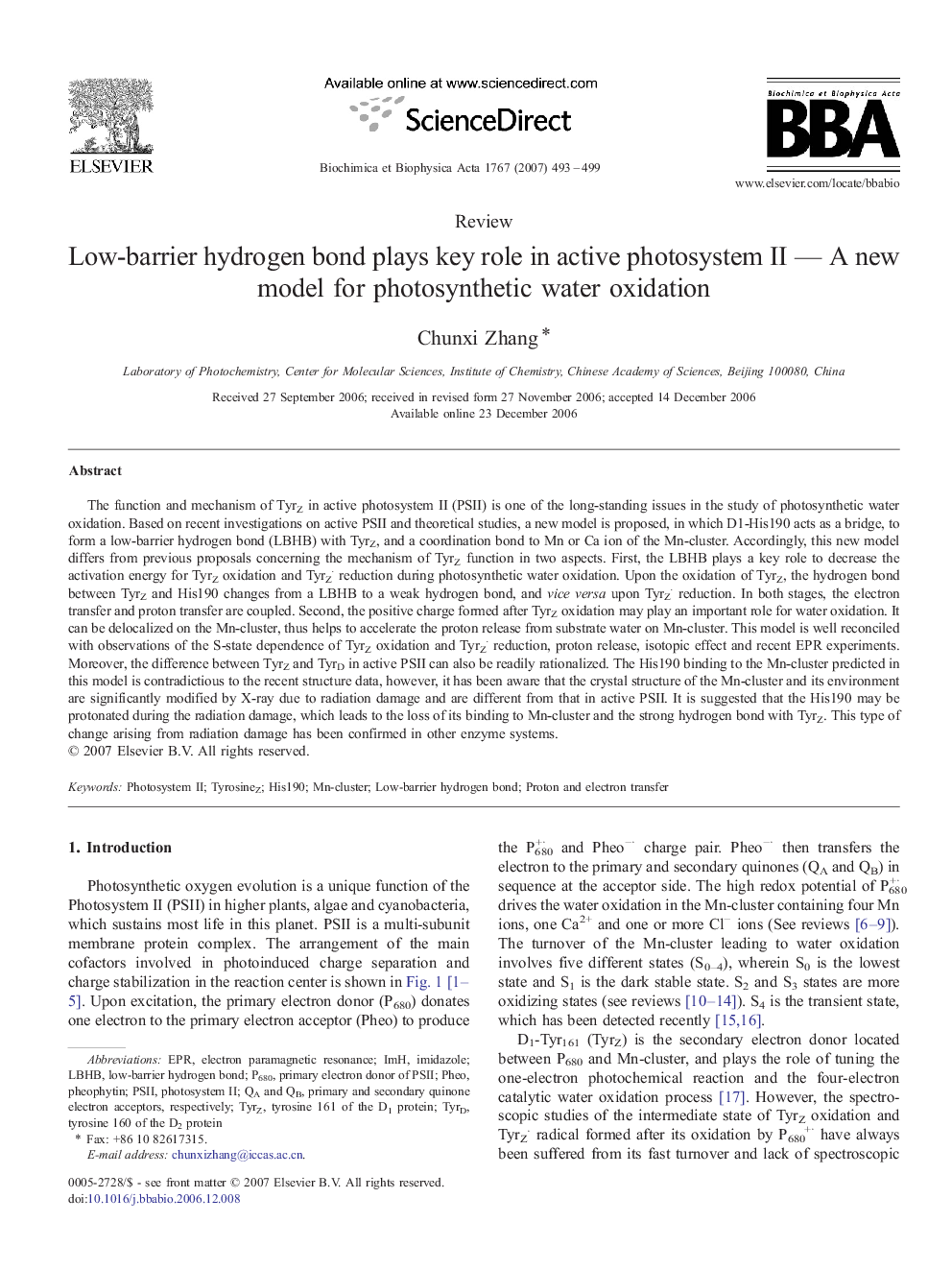| Article ID | Journal | Published Year | Pages | File Type |
|---|---|---|---|---|
| 1943550 | Biochimica et Biophysica Acta (BBA) - Bioenergetics | 2007 | 7 Pages |
The function and mechanism of TyrZ in active photosystem II (PSII) is one of the long-standing issues in the study of photosynthetic water oxidation. Based on recent investigations on active PSII and theoretical studies, a new model is proposed, in which D1-His190 acts as a bridge, to form a low-barrier hydrogen bond (LBHB) with TyrZ, and a coordination bond to Mn or Ca ion of the Mn-cluster. Accordingly, this new model differs from previous proposals concerning the mechanism of TyrZ function in two aspects. First, the LBHB plays a key role to decrease the activation energy for TyrZ oxidation and TyrZ· reduction during photosynthetic water oxidation. Upon the oxidation of TyrZ, the hydrogen bond between TyrZ and His190 changes from a LBHB to a weak hydrogen bond, and vice versa upon TyrZ· reduction. In both stages, the electron transfer and proton transfer are coupled. Second, the positive charge formed after TyrZ oxidation may play an important role for water oxidation. It can be delocalized on the Mn-cluster, thus helps to accelerate the proton release from substrate water on Mn-cluster. This model is well reconciled with observations of the S-state dependence of TyrZ oxidation and TyrZ· reduction, proton release, isotopic effect and recent EPR experiments. Moreover, the difference between TyrZ and TyrD in active PSII can also be readily rationalized. The His190 binding to the Mn-cluster predicted in this model is contradictious to the recent structure data, however, it has been aware that the crystal structure of the Mn-cluster and its environment are significantly modified by X-ray due to radiation damage and are different from that in active PSII. It is suggested that the His190 may be protonated during the radiation damage, which leads to the loss of its binding to Mn-cluster and the strong hydrogen bond with TyrZ. This type of change arising from radiation damage has been confirmed in other enzyme systems.
